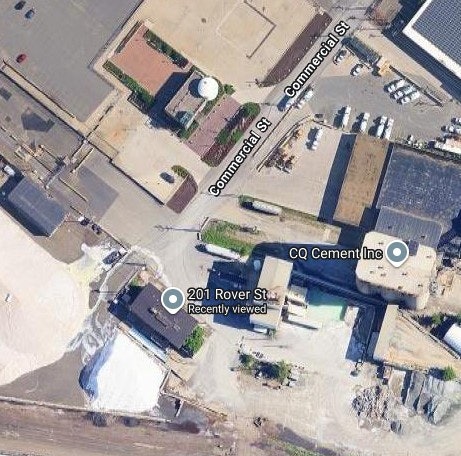Augmented Reality (AR) describes the practice of providing an enhanced version of reality in which the physical world is augmented with technology, namely superimposed computer-generated images, thereby creating a composite view of the real world.
What is Augmented Reality?
Unlike Virtual Reality, which produces computer-generated environments we can be immersed in and interact with, Augmented Reality adds, or augments, reality. By augmenting reality, AR generates the experience of a new, bolder natural world.
With AR becoming increasingly feasible for businesses, financially and otherwise, this technology presents a number of promising opportunities for small businesses.
Using AR to Get More Customers
All businesses share the same aim of attracting new customers and clients and retaining existing ones. From retailers to hairdressers, restaurants to service providers, one of the biggest challenges of running any business is attracting and retaining customers.
One of the leading ways AR is helping small businesses today is that this technology enables customers to try-and-buy experiences, which is particularly useful in the world of retail.
Whereas customers would have previously had to physically go to a store to try a garment on or browse through jewelry, furniture or artwork, Augmented Reality allows customers to try on items and preview products virtually. Reviewing products virtually and remotely means retailers’ customer bases are not tied down by geographical restraints.
Small Business Deals
By enabling customers to try-before-they-buy, small businesses can sell their items anywhere around the world with greater confidence, with less risks of items being returned.
With customers being able to interact and immerse themselves with products before they commit to buying, creates high quality levels of customer services, a leading contributor in helping small businesses attract new customers and retain existing ones.
Personalizing Products
As well as being able to try-before-you-buy, Augmented Reality allows customers to personalize their products. Through AR technology, customers can personalize items via videos and images, so they match their exact preferences and tastes, which enables them to make more informed purchasing decisions.
By offering such an advanced service, businesses are seen in a more professional, competitive light, which works in their favor as a means of attracting new customers and encouraging a loyal customer base.
Giving customers the ability to personalize products through Augmented Reality, also means the chances of having items returned are reduced, which is favorable for businesses, particularly small businesses which cannot afford to regularly have items returned.
Offering Instant Product Information
Another way AR technology is helping small businesses, is that it enables them to provide customers with instant information about products. Through AR customers can scan products on the shelves in shops with their smartphone and receive instant information related to the product, which, again, helps them make a more informed decision about the product.
By offering this advanced service to customers, small businesses develop their reputation as a tech-savvy company that has its customers’ best interests at heart, ultimately helping attract and retain shoppers.
Providing a Virtual Experience
Augmented Reality can provide clients and customers with an interactive, virtual experience, designed to encourage and promote a businesses services and tools. For example, a construction business or interior design company can take clients on an interactive 3D walkthrough using AR technology to show them what a renovation or home improvement project would look like when completed.
Such immersive, futuristic experiences can prove profitable in encouraging clients to use the services of companies like construction firms and interior designers.
Similar experiences are being offered by tech-savvy travel companies, which, through Augmented Reality apps. AR apps show travelers superimposed, computer-generated views of towns, cities, hotels, sites and other places they are thinking about traveling to.
They can also provide itineraries, maps of an area, recommendations about the best bars, restaurants and tourist attractions, to help persuade interested parties to book a travel trip and plan their itinerary, which enhances the whole customer service experience and helps travel companies become more competitive and reach out to new customers.
Using Augmented Reality for Advertising
Businesses of all sectors and sizes benefit from striking, attention-grabbing advertising. Augmented Reality advertising, designed to grab the public’s attention through the likes of moving images and realistic sounds, can help small businesses generate more successful advertising campaigns.
Such engaging, memorable and interactive advertising methods can work wonders in helping small businesses generate greater interest in their brand and ultimately sell more of their products or services.
Augmented Reality might be in relative infancy, but the smartest, savviest and most determined of small businesses are already capitalizing on this immersive, fun, engaging and augmented version of reality to stand out over competitors, attract customers and increase sales.
Augmented Reality in Training and Employee Development
Augmented Reality (AR) is transforming the landscape of employee training and development, offering immersive, interactive learning experiences that significantly enhance knowledge retention and engagement.
By superimposing digital information onto the physical world, AR creates realistic simulations and scenarios for hands-on training without the risks or costs associated with real-world practice. Here’s how AR is making a difference in training and employee development:
- Realistic Simulations: AR provides employees with the opportunity to practice skills in a controlled, virtual environment that mimics real-life situations. For industries such as healthcare, manufacturing, and repair services, this means being able to perform complex procedures or work with machinery without the immediate risks.
- Interactive Learning: Unlike traditional training met















